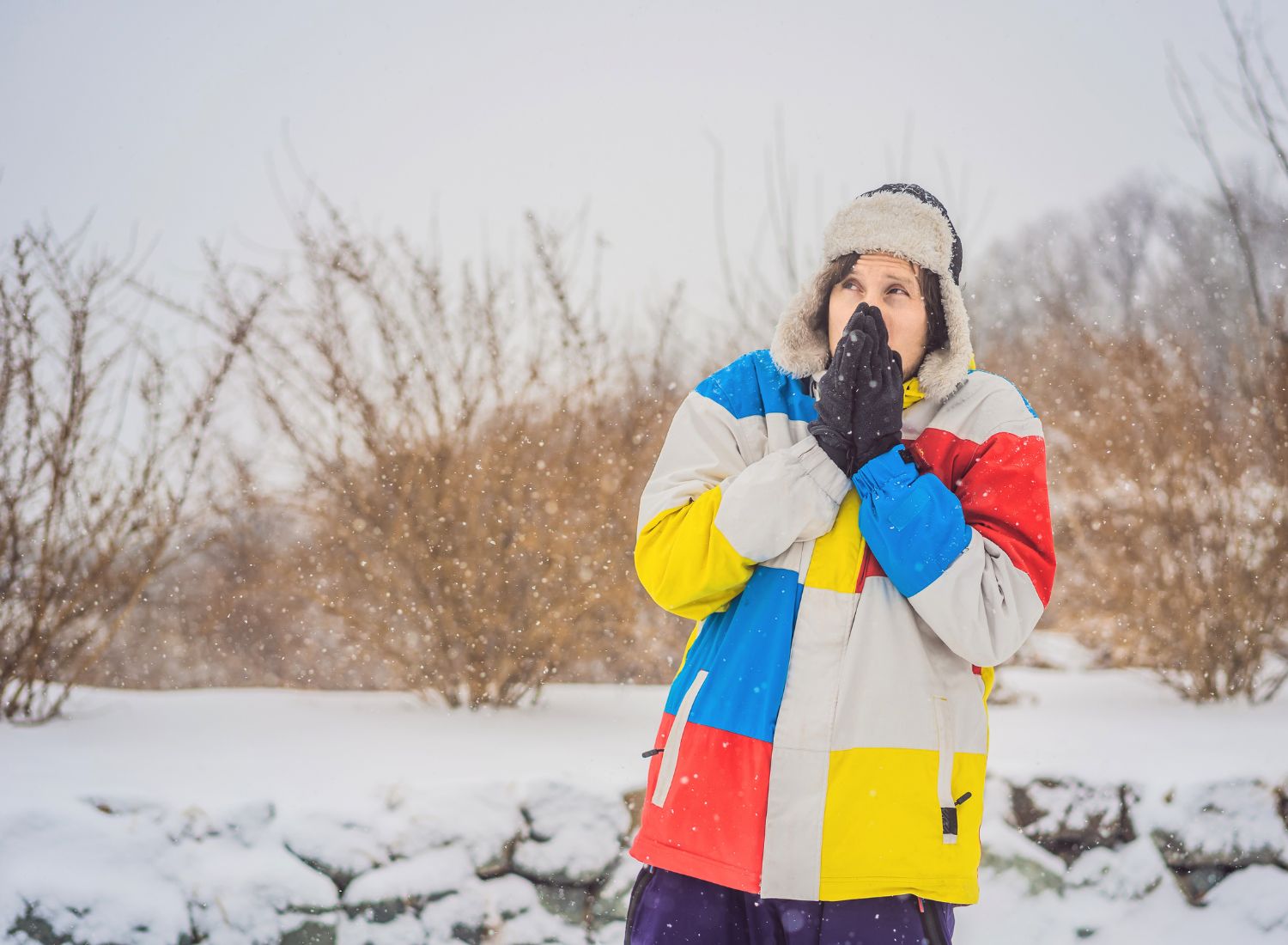How to Recognize and Prevent Cold-Related Injuries: Frostbite and Hypothermia

Winter weather and outdoor activities bring plenty of fun, but they also come with risks, particularly cold-related injuries like frostbite and hypothermia. These conditions can be dangerous if left untreated, so it’s essential to know how to recognize the signs, take precautions, and respond appropriately. Below, we’ll explore frostbite and hypothermia in detail, including how to prevent them, symptoms to look out for, potential long-term health implications, and what to do if you or someone else is affected.
Frostbite: Understanding the Risks
What Is Frostbite?
Frostbite occurs when skin and underlying tissues freeze due to prolonged exposure to extreme cold. It most commonly affects extremities like fingers, toes, nose, and ears.
Precautions to Prevent Frostbite
- Dress in Layers: Wear insulated, moisture-wicking clothing and windproof outer layers.
- Protect Extremities: Use gloves, thick socks, and a hat that covers your ears. Consider face masks or balaclavas in extreme cold.
- Stay Dry: Wet clothing can accelerate heat loss, so keep your layers dry.
- Limit Exposure: Take regular breaks indoors to warm up when spending extended time outside.
- Avoid Tight Clothing: Restrictive garments can reduce circulation, increasing the risk of frostbite.
Symptoms of Frostbite
- Early Signs (Frostnip): Skin appears pale, feels cold, and may sting or tingle.
- Mild Frostbite: Skin may feel hard or waxy and become numb. Red or bluish discoloration can appear.
- Severe Frostbite: The area turns white or grayish-yellow, and blisters or blackened tissue (gangrene) may develop.
Possible Long-Term Health Implications
- Permanent nerve damage or loss of sensation in the affected area.
- Chronic pain or sensitivity to cold.
- In severe cases, amputation may be necessary.
First Aid for Frostbite
- Move to a Warm Place: Remove the individual from the cold as soon as possible.
- Warm the Affected Area: Use warm (not hot) water, around 104°F (40°C). Avoid direct heat like heating pads or fires, as numb skin may burn easily.
- Protect the Skin: Use loose, dry bandages to cover the frostbitten area and separate affected fingers or toes.
- Avoid Re-Freezing: Do not thaw frostbitten skin if there’s a chance it will refreeze before staying warm.
- Hydrate: Warm fluids (non-alcoholic and caffeine-free) can help improve circulation.
When to Seek Medical Attention
- The area remains numb, hard, or blistered after rewarming.
- Signs of severe frostbite, like blackened tissue or deep damage, are present.
- Fever, confusion, or other signs of infection develop.
Hypothermia: A Life-Threatening Condition
What Is Hypothermia?
Hypothermia occurs when the body loses heat faster than it can produce it, causing a drop in core temperature below 95°F (35°C). It is a medical emergency that can progress rapidly if untreated.
Precautions to Prevent Hypothermia
- Layer Properly: Choose thermal clothing that retains body heat. Use a water-resistant outer layer.
- Cover Exposed Skin: Scarves, hats, and gloves can help retain body heat.
- Stay Active: Physical activity generates body heat, but avoid overexertion that leads to sweating.
- Avoid Alcohol: Alcohol may make you feel warm, but it speeds up heat loss.
- Monitor the Weather: Avoid prolonged exposure during extreme cold or high winds.
Symptoms of Hypothermia
- Mild Hypothermia: Shivering, cold skin, fatigue, and slight confusion.
- Moderate Hypothermia: Shivering stops, drowsiness, slurred speech, clumsiness, and slower breathing or heart rate.
- Severe Hypothermia: Loss of consciousness, weak or irregular pulse, shallow breathing, and in extreme cases, cardiac arrest.
Possible Long-Term Health Implications
- Long-term nerve or organ damage due to reduced blood flow.
- Increased risk of frostbite.
- Permanent cognitive or motor skill impairment in severe cases.
First Aid for Hypothermia
- Call for Help: Always seek emergency medical attention for moderate to severe hypothermia.
- Warm the Body Gradually: Move the person to a warm environment. Remove wet clothing and replace it with dry, insulating layers.
- Use Warm Compresses: Apply warm (not hot) compresses to the neck, chest, or groin. Avoid warming extremities first, as this can lead to shock.
- Provide Warm Fluids: Offer warm, non-alcoholic drinks if the person is conscious.
- Avoid Direct Heat: Do not use hot water, heating pads, or electric blankets, as rapid warming can cause complications.
Final Thoughts
Both frostbite and hypothermia are preventable with proper precautions and awareness. Recognizing the symptoms early and acting quickly can prevent minor issues from becoming life-threatening emergencies. When venturing out in cold weather, prioritize your safety by dressing appropriately, limiting exposure, and staying vigilant for warning signs. With knowledge and preparation, you can safely enjoy winter activities while minimizing the risks.
Your Adventure, Our Experience
At TheCampingList, our dedication to authenticity and reliability stems from our own adventures in the great outdoors. Our team, comprised of seasoned experts in hiking, camping, climbing, cycling, fishing, and hunting, rigorously tests every product and shares insights drawn from real experiences. This hands-on approach ensures our reviews and guides meet the highest standards of durability, functionality, and comfort. Moreover, our platform thrives on the rich contributions and feedback from our vibrant community of enthusiasts. We pride ourselves on delivering unbiased, educational content that empowers and informs your outdoor pursuits. Trust in TheCampingList for genuine advice and support, where we're all about enriching your journey, every step of the way.